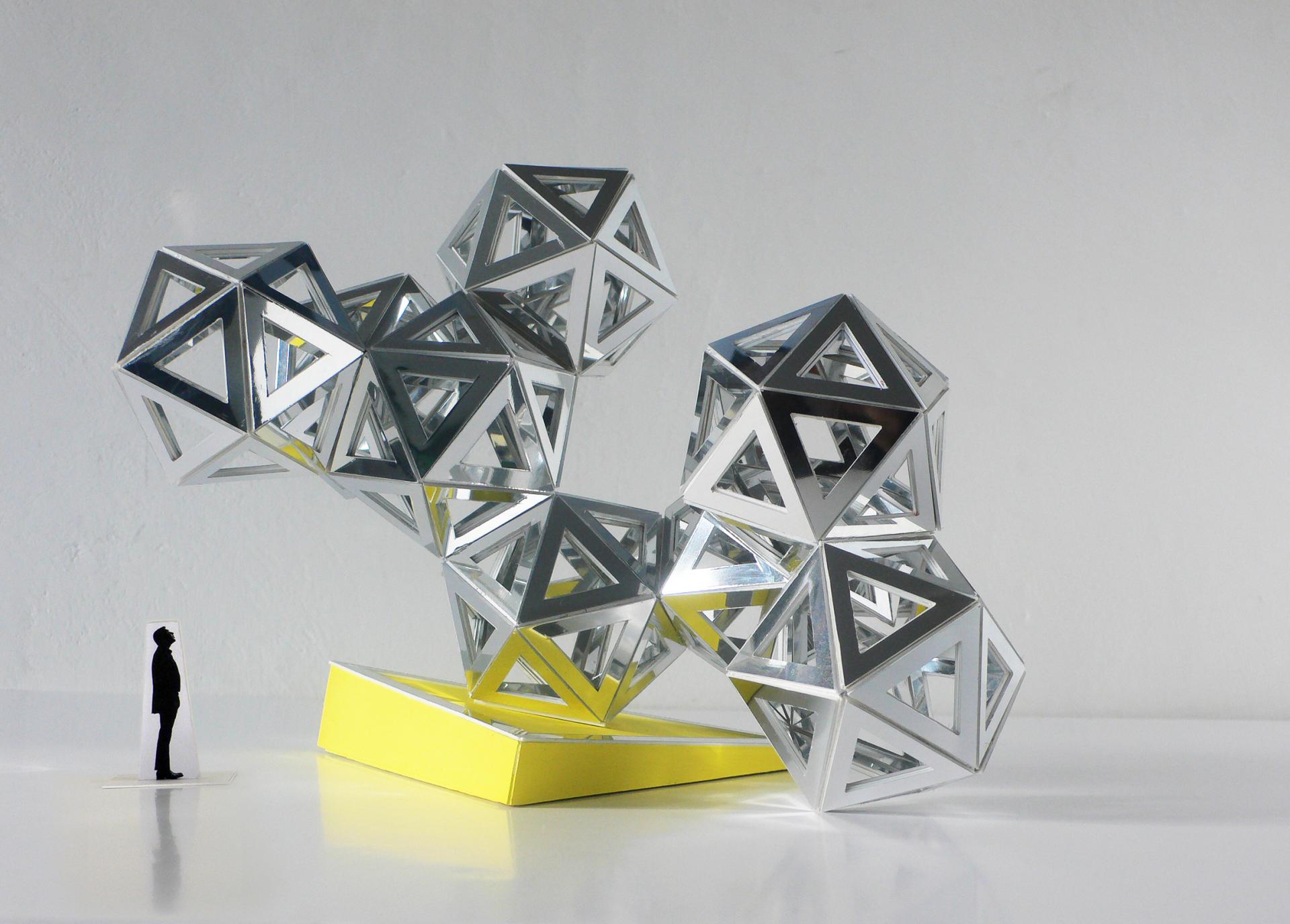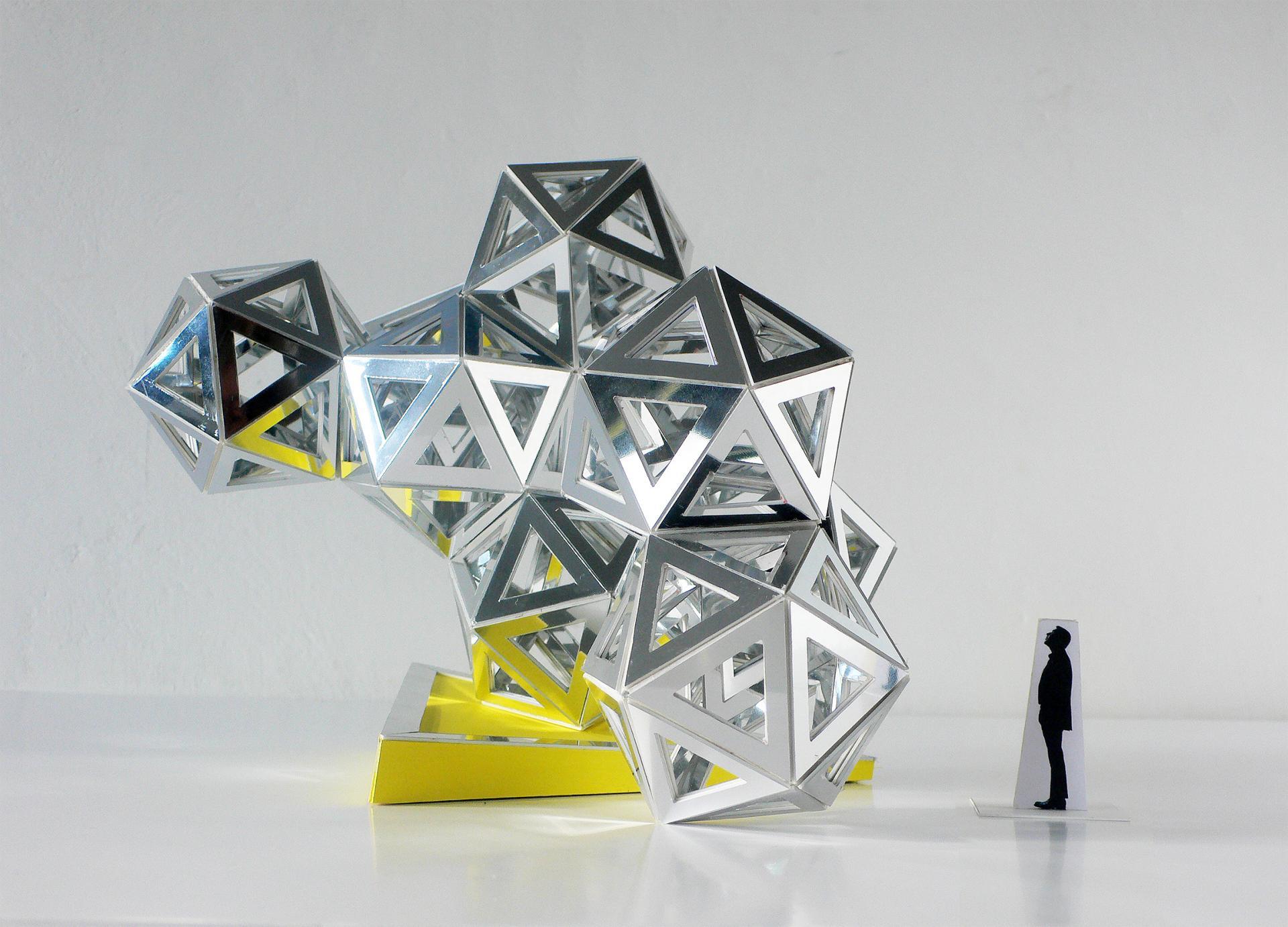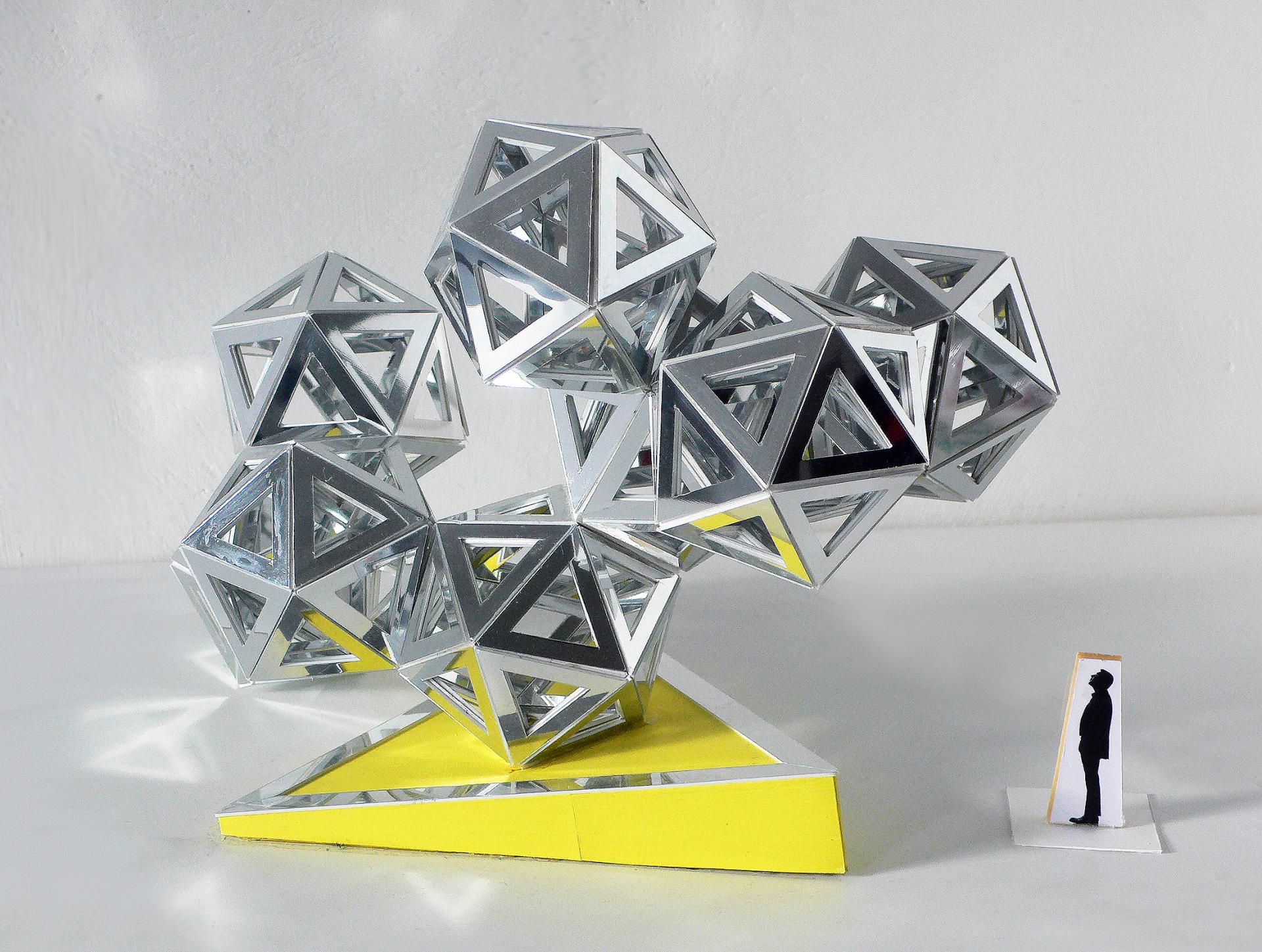Reflecting on V-structures
Art in Public Places competition, 2013 (proposal)
Friedrich-Loeffler-Institute (FLI), Insel Riems, Federal Research Institute for Animal Health
Steel construction, clad with mirror polished stainless steel elements
The design addresses the antagonism between fascination and danger that is inherent in virus research. It quotes and transforms the international biohazard sign and translates it into an organically proliferating sculpture consisting of eight icosahedra that rise high above the nearby harbour.*
Based on a simple, multiplied geometrical principle, a complex structure is created that transforms its appearance as its viewers change their location: When walking around the sculpture, the linear form is condensed, as its many openings create an increasing agglomeration of overlapping layers, before dissolving again into recognisable individual forms.
The mirroring surfaces create an interplay of changing perspectives and fragmentary reflections. In this way, the sculpture becomes an image of the almost unlimited variations of viruses, with which the researchers at the FLI are confronted in their daily work.
The double-sided mirrored struts have a labyrinthine effect on the structure and are confusing due to the fragmentary interlacing of the view inside the virus. In sunlight, the light reflections spread out over a wide area around the object.
* ![]() biological hazard
biological hazard
Researchers use the icosahedron as a model of the virus in its crystalline structure.




